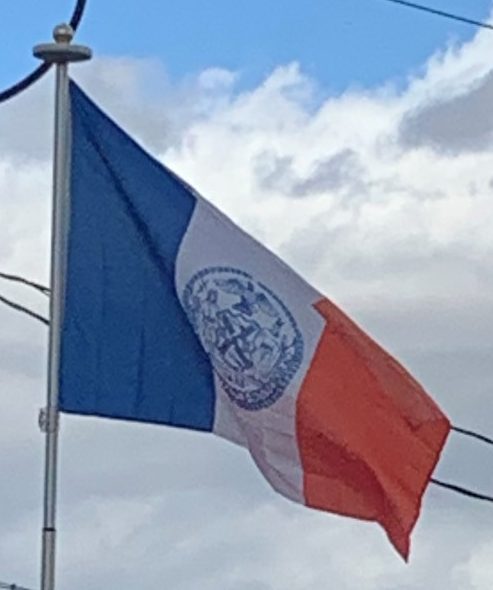On August 24, 1673, during the Third Anglo-Dutch War, Dutch captain Anthony Colve seized the colony of New York from England at the behest of Cornelis Evertsen the Youngest and rechristened it “New Orange” after William III, the Prince of Orange. The Dutch would soon return the island to England under the Treaty of Westminster of November 1674.

Several intertribal wars among the Native Americans and some epidemics brought on by contact with the Europeans caused sizeable population losses for the Lenape between the years 1660 and 1670. By 1700, the Lenape population had diminished to 200. New York experienced several yellow fever epidemics in the 18th century, losing ten percent of its population to the disease in 1702 alone.
New York grew in importance as a trading port while under British rule in the early 1700s. It also became a center of slavery, with 42% of households holding slaves by 1730, the highest percentage outside Charleston, South Carolina. Most slaveholders held a few or several domestic slaves, but others hired them out to work at labor. Slavery became integrally tied to New York’s economy through the labor of slaves throughout the port, and the banks and shipping tied to the American South. Discovery of the African Burying Ground in the 1990s, during construction of a new federal courthouse near Foley Square, revealed that tens of thousands of Africans had been buried in the area in the colonial years.
The 1735 trial and acquittal in Manhattan of John Peter Zenger, who had been accused of seditious libel after criticizing colonial governor William Cosby, helped to establish the freedom of the press in North America. In 1754, Columbia University was founded under charter by King George II as King’s College in Lower Manhattan.
American Revolution:
The Stamp Act Congress met in New York in October 1765, as the Sons of Liberty, organized in the city, skirmished over the next ten years with British troops stationed there. The Battle of Long Island, the largest battle of the American Revolutionary War, was fought in August 1776 within the modern-day borough of Brooklyn.

After the battle, in which the Americans were defeated, the British made the city their military and political base of operations in North America. The city was a haven for Loyalist refugees and escaped slaves who joined the British lines for freedom newly promised by the Crown for all fighters. As many as 10,000 escaped slaves crowded into the city during the British occupation. When the British forces evacuated at the close of the war in 1783, they transported 3,000 freedmen for resettlement in Nova Scotia. They resettled other freedmen in England and the Caribbean.
The only attempt at a peaceful solution to the war took place at the Conference House on Staten Island between American delegates, including Benjamin Franklin, and British general Lord Howe on September 11, 1776. Shortly after the British occupation began, the Great Fire of New York occurred, a large conflagration on the West Side of Lower Manhattan, which destroyed about a quarter of the buildings in the city, including Trinity Church.
